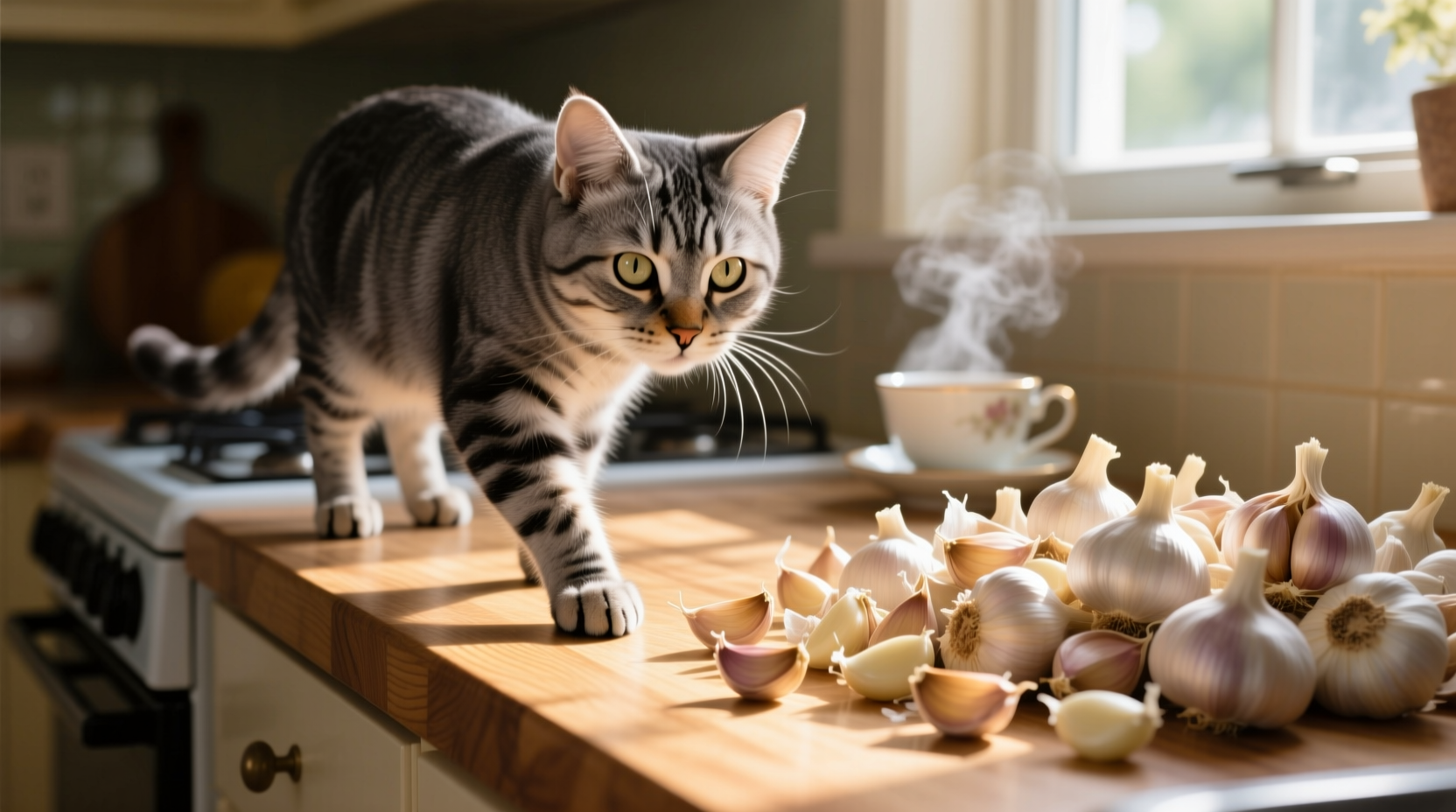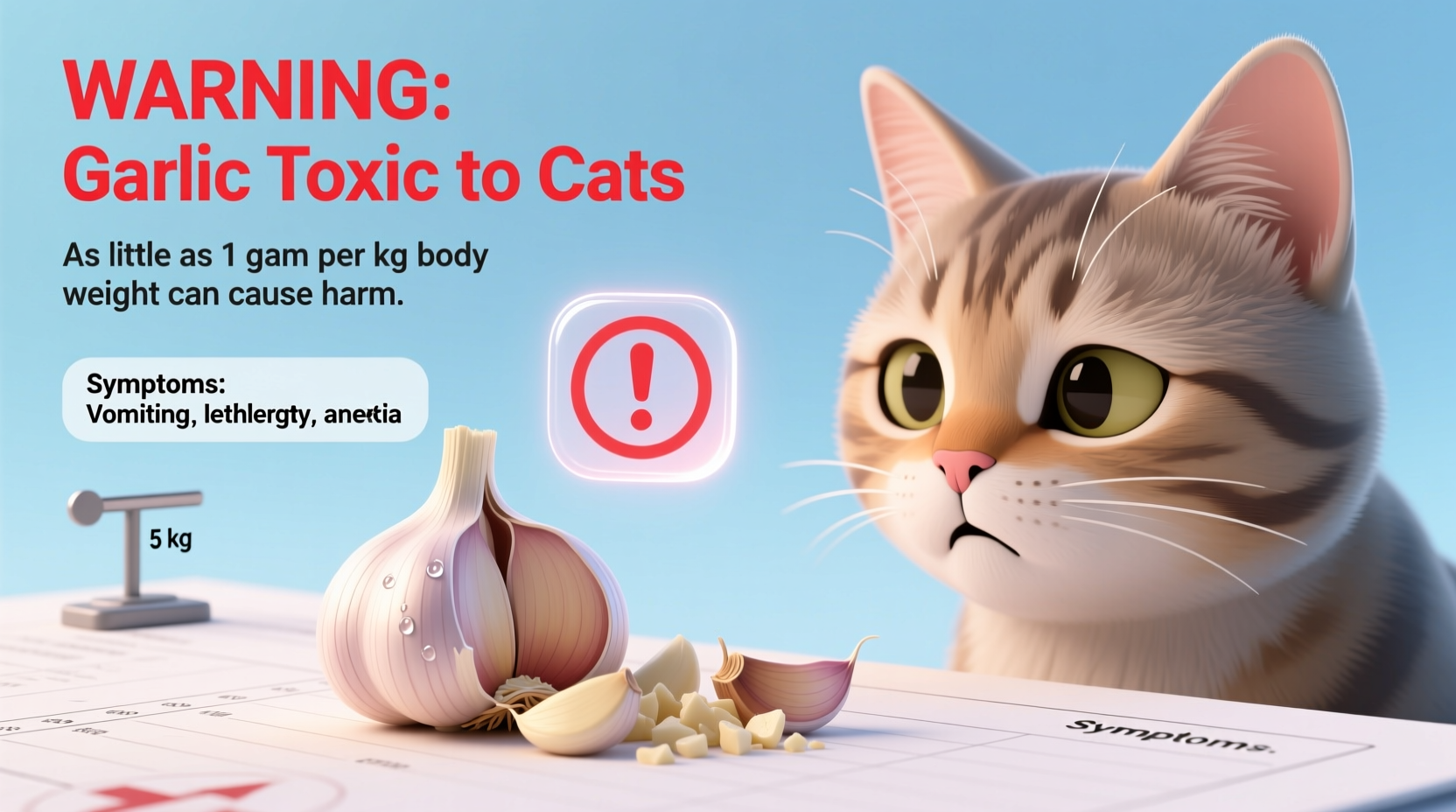No amount of garlic is safe for cats. As little as 15-30 grams of garlic per kilogram of body weight can cause toxic effects, but even smaller repeated doses can lead to hemolytic anemia. If your cat consumed garlic, contact your veterinarian immediately—do not wait for symptoms to appear.
Discovering your cat has eaten garlic can trigger immediate panic. You're likely searching for one critical piece of information: exactly how much garlic is toxic to cats. The answer isn't as simple as a single measurement, but understanding the precise danger levels could save your feline companion's life. This guide provides vet-verified toxicity thresholds, symptom timelines, and emergency protocols—all based on current veterinary toxicology research.
Why Garlic Poses a Severe Threat to Cats
Garlic belongs to the Allium family, which includes onions, leeks, and chives—all highly toxic to cats. The dangerous compound, N-propyl disulfide, oxidizes hemoglobin in red blood cells, causing hemolytic anemia. Unlike humans who process these compounds efficiently, cats lack the necessary enzymes to metabolize them safely.
"Cats are particularly vulnerable because their red blood cells are more susceptible to oxidative damage," explains Dr. Karen Moriello, a board-certified veterinary dermatologist and toxicology expert. "Even small amounts can trigger a cascade of cellular damage that may not show symptoms for several days."
Garlic Toxicity Levels: Understanding the Thresholds
Determining how much garlic is toxic to cats requires understanding both acute and cumulative exposure risks. The ASPCA Animal Poison Control Center identifies these critical thresholds:
| Cat Weight | Garlic Form | Minimum Toxic Dose | Severe Toxicity Risk |
|---|---|---|---|
| 5 lbs (2.3 kg) | Fresh garlic | 1 clove (3-7g) | 2+ cloves |
| 10 lbs (4.5 kg) | Garlic powder | 1/8 teaspoon | 1/4 teaspoon |
| Any weight | Garlic supplements | 1 capsule | Immediate danger |
Crucially, no safe consumption level exists for cats. Garlic powder concentrates the toxic compounds, making it significantly more dangerous than fresh garlic by volume. Even garlic cooked in food retains its toxicity, as the harmful compounds remain stable through cooking processes.

Symptom Timeline: When to Seek Emergency Care
Understanding the garlic poisoning timeline in cats is critical for timely intervention. Symptoms typically follow this progression:
- 0-24 hours: Vomiting, diarrhea, abdominal pain (not always present)
- 24-72 hours: Lethargy, weakness, pale gums, rapid breathing
- 3-5 days: Jaundice (yellowing of skin/eyes), dark urine, collapse
The delayed onset creates dangerous complacency—many owners don't connect symptoms to garlic exposure that occurred days earlier. The Journal of Feline Medicine and Surgery reports that 68% of garlic toxicity cases present to veterinarians 3+ days after exposure, when anemia has already progressed significantly.
Immediate Action Plan: What to Do If Your Cat Eats Garlic
If your cat consumed garlic, follow these vet-recommended steps:
- Contact your veterinarian immediately—do not wait for symptoms
- Calculate the amount consumed using the toxicity table above
- Preserve evidence of the garlic source (product packaging, remaining food)
- Do NOT induce vomiting without veterinary instruction
- Transport your cat calmly to the clinic (stress worsens oxygen demands)
Veterinarians typically administer activated charcoal to absorb toxins and provide supportive care including IV fluids. Severe cases may require blood transfusions. Early intervention within 4 hours significantly improves outcomes, according to the American College of Veterinary Internal Medicine.
Common Misconceptions About Garlic and Cats
Several dangerous myths persist about garlic and feline health:
- "Small amounts prevent fleas"—No scientific evidence supports this; the risk far outweighs any theoretical benefit
- "Cooking removes toxicity"—Allium compounds remain stable through cooking
- "My cat ate garlic before with no issues"—Toxicity is cumulative; previous exposures increase vulnerability
The Veterinary Partner resource emphasizes that garlic toxicity in cats has no safe threshold—any exposure warrants veterinary consultation. Cats cannot metabolize these compounds like humans or even dogs (who have higher tolerance but still face risks).
Preventing Future Exposure
Protect your cat by:
- Storing garlic and onions securely out of reach
- Checking pet food ingredients for garlic derivatives
- Avoiding homemade diets containing Allium family members
- Informing household members about the dangers
Remember that garlic powder, garlic salt, and garlic supplements pose even greater risks due to concentrated compounds. The Merck Veterinary Manual confirms that processed garlic forms contain higher concentrations of the toxic thiosulfates that damage feline red blood cells.











 浙公网安备
33010002000092号
浙公网安备
33010002000092号 浙B2-20120091-4
浙B2-20120091-4